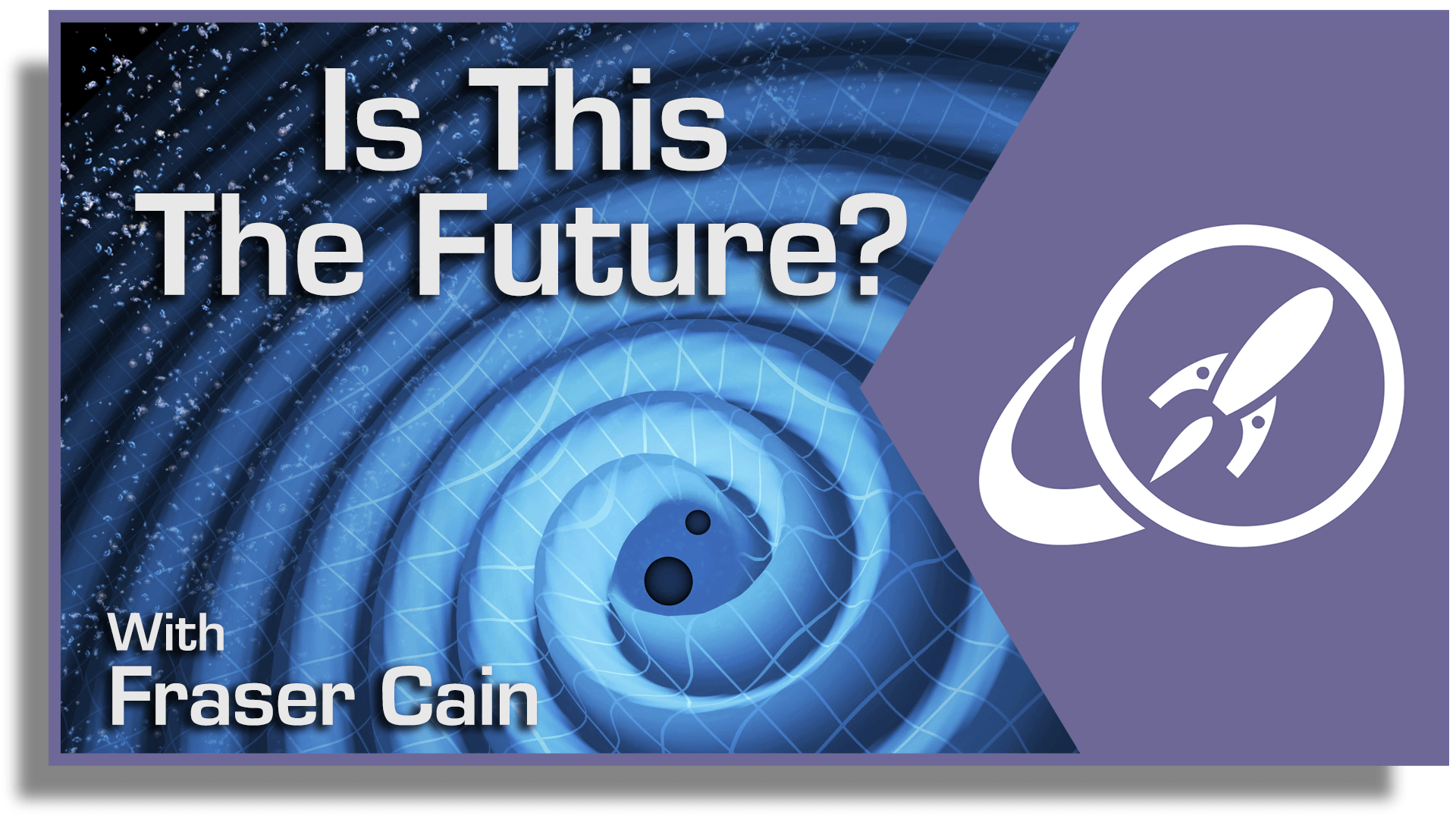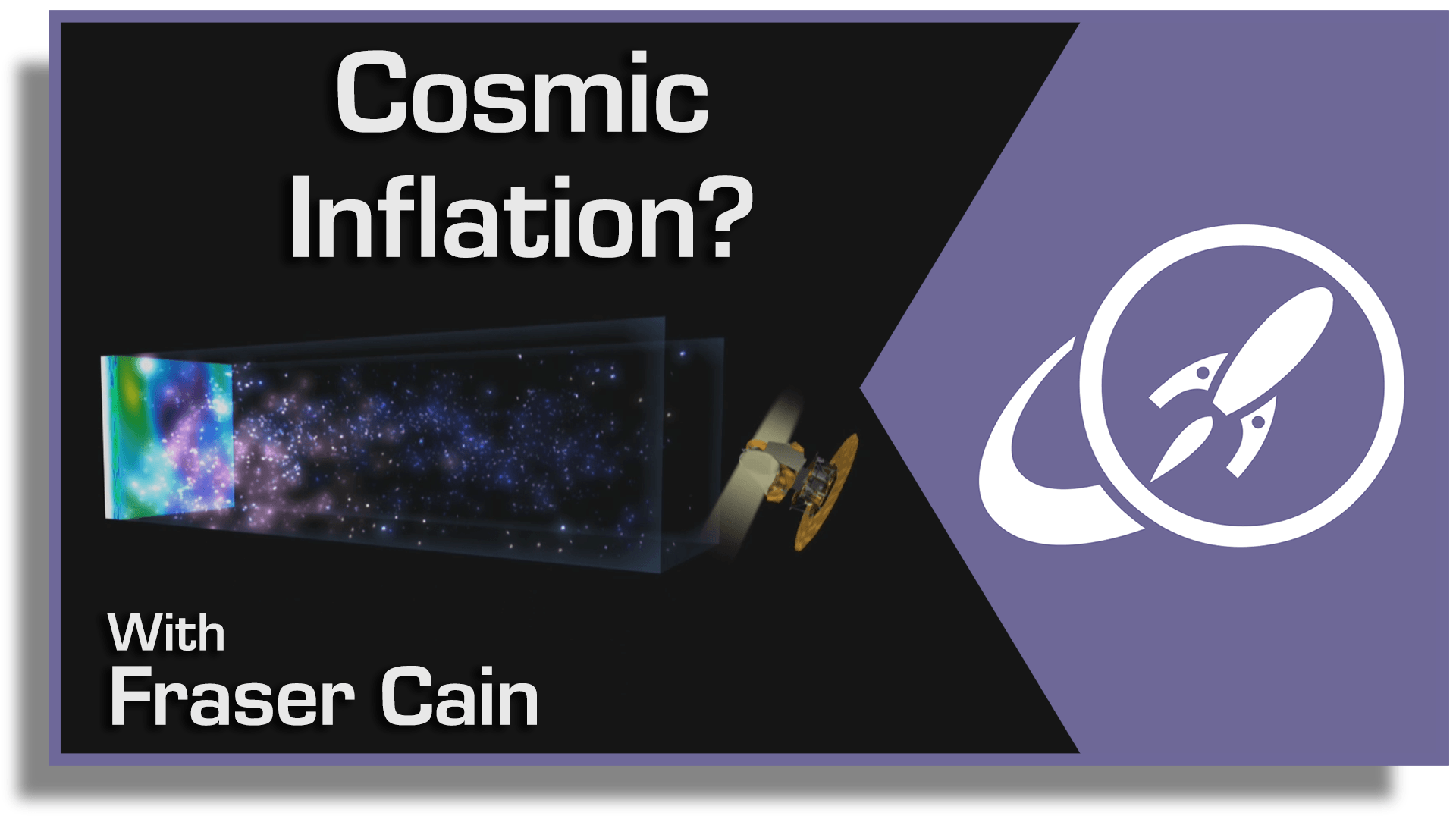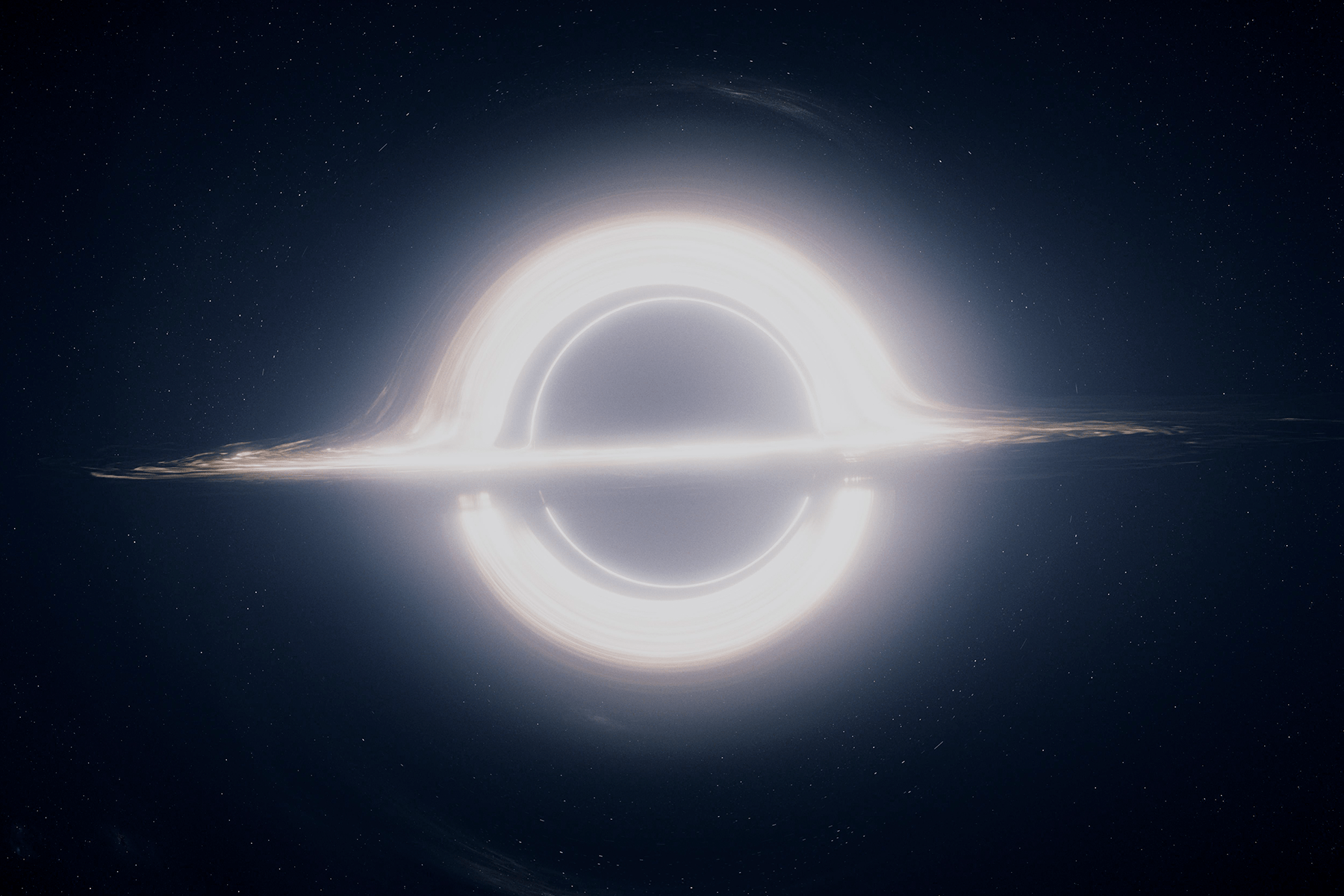Black holes often appear in science fiction movies, largely because elements of their existence are still a mystery. They have fascinating impacts on the surrounding region of space too with distortions in space and time high on the list. A team of astronomers have found a supermassive black hole with twin jets blasting out an incredible 23 million light years, the longest yet. To put this into context, if you lined up 140 Milky Way galaxies side by side, then that’s the length of the jet!
Continue reading “Astronomers Find the Longest Black Hole Jets Ever Seen”Gravitational Astronomy? How Detecting Gravitational Waves Changes Everything
Just a couple of weeks ago, astronomers from Caltech announced their third detection of gravitational waves from the Laser Interferometer Gravitational-Wave Observatory or LIGO.
As with the previous two detections, astronomers have determined that the waves were generated when two intermediate-mass black holes slammed into each other, sending out ripples of distorted spacetime.
One black hole had 31.2 times the mass of the Sun, while the other had 19.4 solar masses. The two spiraled inward towards each other, until they merged into a single black hole with 48.7 solar masses. And if you do the math, twice the mass of the Sun was converted into gravitational waves as the black holes merged.
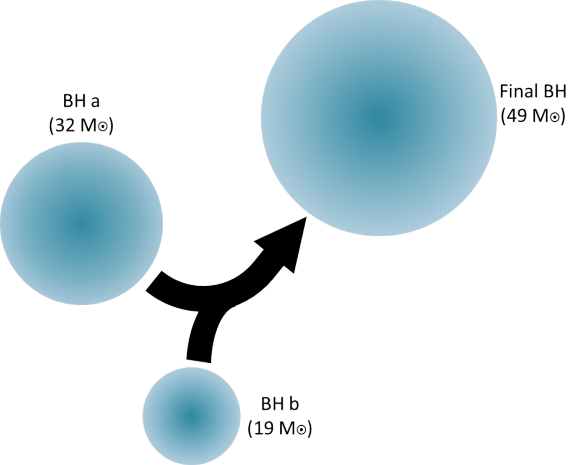
These gravitational waves traveled outward from the colossal collision at the speed of light, stretching and compressing spacetime like a tsunami wave crossing the ocean until they reached Earth, located about 2.9 billion light-years away.
The waves swept past each of the two LIGO facilities, located in different parts of the United States, stretching the length of carefully calibrated laser measurements. And from this, researchers were able to detect the direction, distance and strength of the original merger.
Seriously, if this isn’t one of the coolest things you’ve ever heard, I’m clearly easily impressed.
Now that the third detection has been made, I think it’s safe to say we’re entering a brand new field of gravitational astronomy. In the coming decades, astronomers will use gravitational waves to peer into regions they could never see before.
Being able to perceive gravitational waves is like getting a whole new sense. It’s like having eyes and then suddenly getting the ability to perceive sound.
This whole new science will take decades to unlock, and we’re just getting started.
As Einstein predicted, any mass moving through space generates ripples in spacetime. When you’re just walking along, you’re actually generating tiny ripples. If you can detect these ripples, you can work backwards to figure out what size of mass made the ripples, what direction it was moving, etc.
Even in places that you couldn’t see in any other way. Let me give you a couple of examples.
Black holes, obviously, are the low hanging fruit. When they’re not actively feeding, they’re completely invisible, only detectable by how they gravitational attract objects or bend light from objects passing behind them.
But seen in gravitational waves, they’re like ships moving across the ocean, leaving ripples of distorted spacetime behind them.
With our current capabilities through LIGO, astronomers can only detect the most massive objects moving at a significant portion of the speed of light. A regular black hole merger doesn’t do the trick – there’s not enough mass. Even a supermassive black hole merger isn’t detectable yet because these mergers seem to happen too slowly.
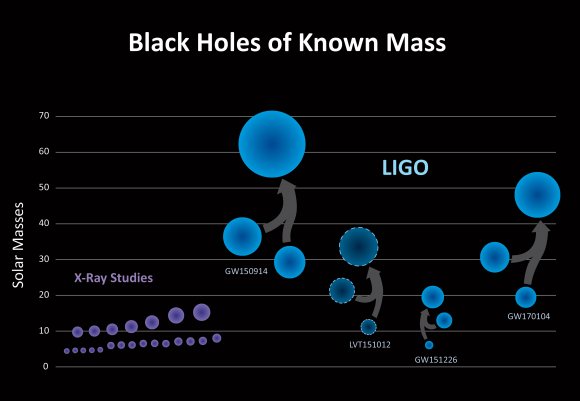
This is why all the detections so far have been intermediate-mass black holes with dozens of times the mass of our Sun. And we can only detect them at the moment that they’re merging together, when they’re generating the most intense gravitational waves.
If we can boost the sensitivity of our gravitational wave detectors, we should be able to spot mergers of less and more massive black holes.
But merging isn’t the only thing they do. Black holes are born when stars with many more times the mass of our Sun collapse in on themselves and explode as supernovae. Some stars, we’ve now learned just implode as black holes, never generating the supernovae, so this process happens entirely hidden from us.
Is there a singularity at the center of a black hole event horizon, or is there something there, some kind of object smaller than a neutron star, but bigger than an infinitely small point? As black holes merge together, we could see beyond the event horizon with gravitational waves, mapping out the invisible region within to get a sense of what’s going on down there.
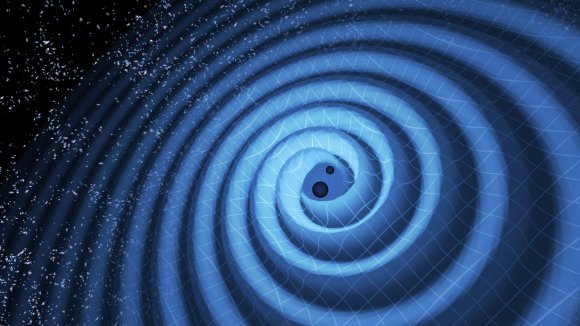
We want to know about even less massive objects like neutron stars, which can also form from a supernova explosion. These neutron stars can orbit one another and merge generating some of the most powerful explosions in the Universe: gamma ray bursts. But do neutron stars have surface features? Different densities? Could we detect a wobble in the gravitational waves in the last moments before a merger?
And not everything needs to merge. Sensitive gravitational wave detectors could sense binary objects with a large imbalance, like a black hole or neutron star orbiting around a main sequence star. We could detect future mergers by their gravitational waves.
Are gravitational waves a momentary distortion of spacetime, or do they leave some kind of permanent dent on the Universe that we could trace back? Will we see echoes of gravity from gravitational waves reflecting and refracting through the fabric of the cosmos?
Perhaps the greatest challenge will be using gravitational waves to see beyond the Cosmic Microwave Background Radiation. This region shows us the Universe 380,000 years after the Big Bang, when everything was cool enough for light to move freely through the Universe.
But there was mass there, before that moment. Moving, merging mass that would have generated gravitational waves. As we explained in a previous article, astronomers are working to find the imprint of these gravitational waves on the Cosmic Microwave Background, like an echo, or a shadow. Perhaps there’s a deeper Cosmic Gravitational Background Radiation out there, one which will let us see right to the beginning of time, just moments after the Big Bang.
And as always, there will be the surprises. The discoveries in this new field that nobody ever saw coming. The “that’s funny” moments that take researchers down into whole new fields of discovery, and new insights into how the Universe works.
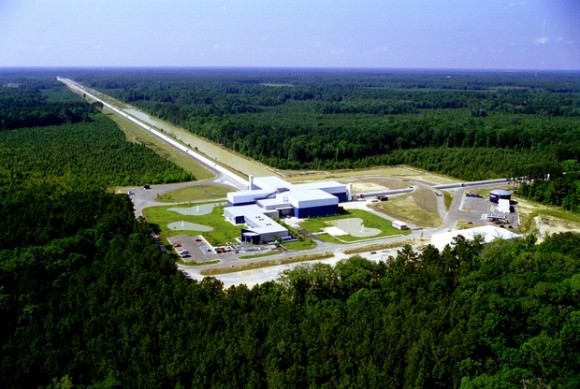
The LIGO project was begun back in 1994, and the first iteration operated from 2002 to 2012 without a single gravitational wave detection. It was clear that the facility wasn’t sensitive enough, so researchers went back and made massive improvements.
In 2008, they started improving the facility, and in 2015, Advanced LIGO came online with much more sensitivity. With the increased capabilities, Advanced LIGO made its first discovery in 2016, and now two more discoveries have been added.
LIGO can currently only detect the general hemisphere of the sky where a gravitational wave was emitted. And so, LIGO’s next improvement will be to add another facility in India, called INDIGO. In addition to improving the sensitivity of LIGO, this will give astronomers three observations of each event, to precisely detect the origin of the gravitational waves. Then visual astronomers could do follow up observations, to map the event to anything in other wavelengths.
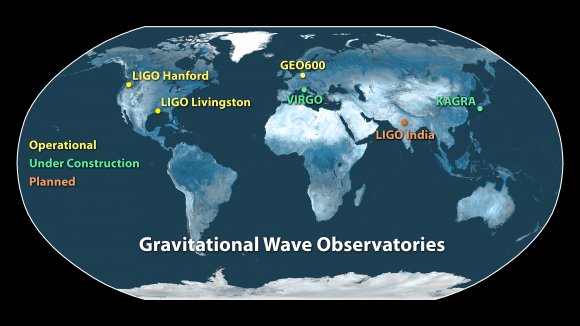
A European experiment known as Virgo has been operating for a few years as well, agreeing to collaborate with the LIGO team if any detections are made. So far, the Virgo experiment hasn’t found anything, but it’s being upgraded with 10 times the sensitivity, which should be fully operational by 2018.
A Japanese experiment called the Kamioka Gravitational Wave Detector, or KAGRA, will come online in 2018 as well, and be able to contribute to the observations. It should be capable of detecting binary neutron star mergers out to nearly a billion light-years away.
Just with visual astronomy, there are a set of next generation supergravitational wave telescopes in the works, which should come online in the next few decades.
The Europeans are building the Einstein Telescope, which will have detection arms 10 km long, compared to 4 km for LIGO. That’s like, 6 more km.
There’s the European Space Agency’s space-based Laser Interferometer Space Antenna, or LISA, which could launch in 2030. This will consist of a fleet of 3 spacecraft which will maintain a precise distance of 2.5 million km from each other. Compare that to the Earth-based detection distances, and you can see why the future of observations will come from space.
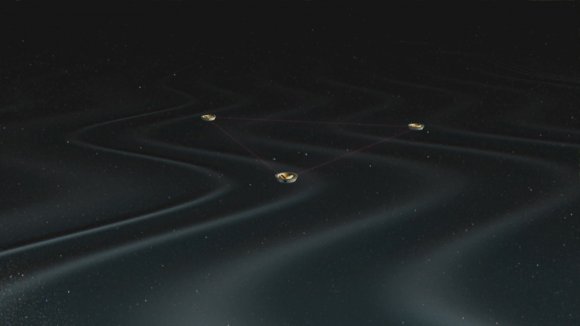
And that last idea, looking right back to the beginning of time could be a possibility with the Big Bang Observer mission, which will have a fleet of 12 spacecraft flying in formation. This is still all in the proposal stage, so no concrete date for if or when they’ll actually fly.
Gravitational wave astronomy is one of the most exciting fields of astronomy. This entirely new sense is pushing out our understanding of the cosmos in entirely new directions, allowing us to see regions we could never even imagine exploring before. I can’t wait to see what happens next.
What Was Cosmic Inflation? The Quest to Understand the Earliest Universe
The Big Bang. The discovery that the Universe has been expanding for billions of years is one of the biggest revelations in the history of science. In a single moment, the entire Universe popped into existence, and has been expanding ever since.
We know this because of multiple lines of evidence: the cosmic microwave background radiation, the ratio of elements in the Universe, etc. But the most compelling one is just the simple fact that everything is expanding away from everything else. Which means, that if you run the clock backwards, the Universe was once an extremely hot dense region
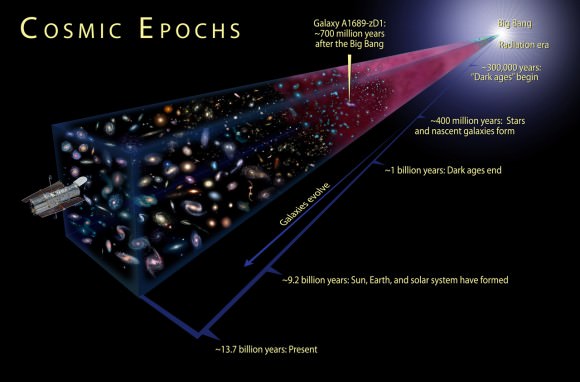
Let’s go backwards in time, billions of years. The closer you get to the Big Bang, the closer everything was, and the hotter it was. When you reach about 380,000 years after the Big Bang, the entire Universe was so hot that all matter was ionized, with atomic nuclei and electrons buzzing around each other.
Keep going backwards, and the entire Universe was the temperature and density of a star, which fused together the primordial helium and other elements that we see to this day.
Continue to the beginning of time, and there was a point where everything was so hot that atoms themselves couldn’t hold together, breaking into their constituent protons and neutrons. Further back still and even atoms break apart into quarks. And before that, it’s just a big question mark. An infinitely dense Universe cosmologists called the singularity.
When you look out into the Universe in all directions, you see the cosmic microwave background radiation. That’s that point when the Universe cooled down so that light could travel freely through space.
And the temperature of this radiation is almost exactly the same in all directions that you look. There are tiny tiny variations, detectable only by the most sensitive instruments.
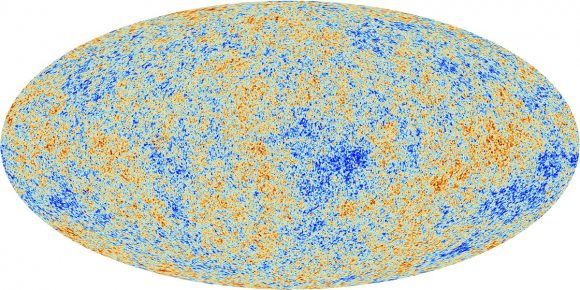
When two things are the same temperature, like a spoon in your coffee, it means that those two things have had an opportunity to interact. The coffee transferred heat to the spoon, and now their temperatures have equalized.
When we see this in opposite sides of the Universe, that means that at some point, in the ancient past, those two regions were touching. That spot where the light left 13.8 billion years ago on your left, was once directly touching that spot on your right that also emitted its light 13.8 billion years ago.
This is a great theory, but there’s a problem: The Universe never had time for those opposite regions to touch. For the Universe to have the uniform temperature we see today, it would have needed to spend enough time mixing together. But it didn’t have enough time, in fact, the Universe didn’t have any time to exchange temperature.
Imagine you dipped that spoon into the coffee and then pulled it out moments later before the heat could transfer, and yet the coffee and spoon are exactly the same temperature. What’s going on?

To address this problem, the cosmologist Alan Guth proposed the idea of cosmic inflation in 1980. That moments after the Big Bang, the entire Universe expanded dramatically.
And by “moments”, I mean that the inflationary period started when the Universe was only 10^-36 seconds old, and ended when the Universe was 10^-32 seconds old.
And by “expanded dramatically”, I mean that it got 10^26 times larger. That’s a 1 followed by 26 zeroes.
Before inflation, the observable Universe was smaller than an atom. After inflation, it was about 0.88 millimeters. Today, those regions have been stretched 93 billion light-years apart.
This concept of inflation was further developed by cosmologists Andrei Linde, Paul Steinhardt, Andy Albrecht and others.
Inflation resolved some of the shortcomings of the Big Bang Theory.
The first is known as the flatness problem. The most sensitive satellites we have today measure the Universe as flat. Not like a piece-of-paper-flat, but flat in the sense that parallel lines will remain parallel forever as they travel through the Universe. Under the original Big Bang cosmology, you would expect the curvature of the Universe to grow with time.
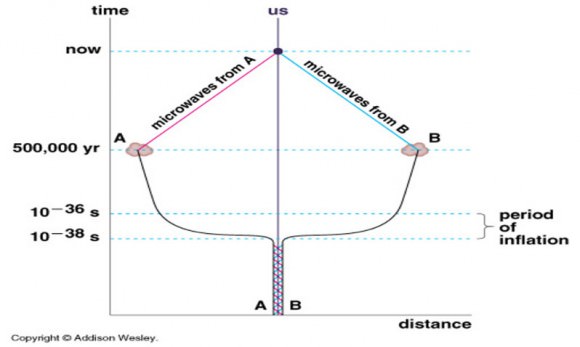
The second is the horizon problem. And this is the problem I mentioned above, that two regions of the Universe shouldn’t have been able to see each other and interact long enough to be the same temperature.
The third is the monopole problem. According to the original Big Bang theory, there should be a vast number of heavy, stable “monopoles”, or a magnetic particle with only a single pole. Inflation diluted the number of monopoles in the Universe so don’t detect them today.
Although the cosmic microwave background radiation appears mostly even across the sky, there could still be evidence of that inflationary period baked into it.

In order to do this, astronomers have been focusing on searching for primordial gravitational waves. These are different from the gravitational waves generated through the collision of massive objects. Primordial gravitational waves are the echoes from that inflationary period which should be theoretically detectable through the polarization, or orientation, of light in the cosmic microwave background radiation.
A collaboration of scientists used an instrument known as the Background Imaging of Cosmic Extragalactic Polarization (or BICEP2) to search for this polarization, and in 2014, they announced that maybe, just maybe, they had detected it, proving the theory of cosmic inflation was correct.
Unfortunately, another team working with the space-based Planck telescope posted evidence that the fluctuations they saw could be fully explained by intervening dust in the Milky Way.
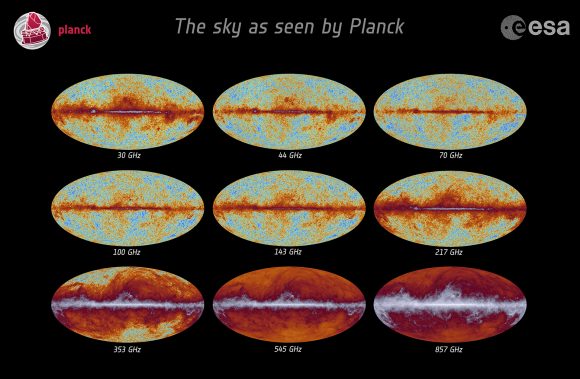
The problem is that BICEP2 and Planck are designed to search for different frequencies. In order to really get to the bottom of this question, more searches need to be done, scanning a series of overlapping frequencies. And that’s in the works now.
BICEP2 and Planck and the newly developed South Pole Telescope as well as some observatories in Chile are all scanning the skies at different frequencies at the same time. Distortion from various types of foreground objects, like dust or radiation should be brighter or dimmer in the different frequencies, while the light from the cosmic microwave background radiation should remain constant throughout.
There are more telescopes, searching more wavelengths of light, searching more of the sky. We could know the answer to this question with more certainty shortly.
One of the most interesting implications of cosmic inflation, if proven, is that our Universe is actually just one in a vast multiverse. While the Universe was undergoing that dramatic expansion, it could have created bubbles of spacetime that spawned other universes, with different laws of physics.

In fact, the father of inflation, Alan Guth, said, “It’s hard to build models of inflation that don’t lead to a multiverse.”
And so, if inflation does eventually get confirmed, then we’ll have a whole multiverse to search for in the cosmic microwave background radiation.
The Big Bang was one of the greatest theories in the history of science. Although it did have a few problems, cosmic inflation was developed to address them. Although there have been a few false starts, astronomers are now performing a sensitive enough search that they might find evidence of this amazing inflationary period. And then it’ll be Nobel Prizes all around.
Was The Big Bang Just A Black Hole?
Fraser “Asks a Spaceman” Dr. Paul Matt Sutter – why do we call the Big Bang a singularity, when we also call black holes singularities?
Continue reading “Was The Big Bang Just A Black Hole?”
Big Bang Theory: Evolution of Our Universe
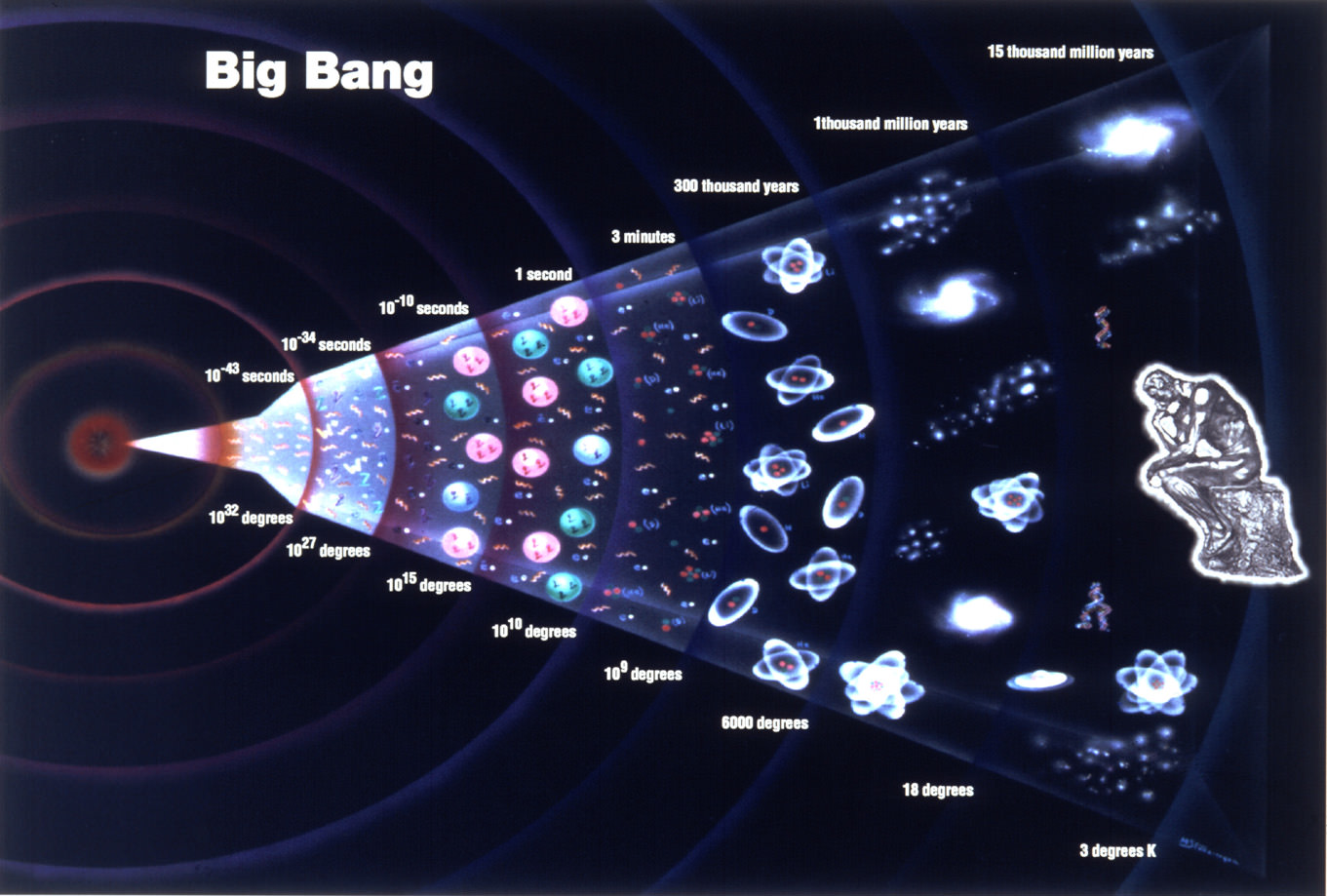
How was our Universe created? How did it come to be the seemingly infinite place we know of today? And what will become of it, ages from now? These are the questions that have been puzzling philosophers and scholars since the beginning the time, and led to some pretty wild and interesting theories. Today, the consensus among scientists, astronomers and cosmologists is that the Universe as we know it was created in a massive explosion that not only created the majority of matter, but the physical laws that govern our ever-expanding cosmos. This is known as The Big Bang Theory.
For almost a century, the term has been bandied about by scholars and non-scholars alike. This should come as no surprise, seeing as how it is the most accepted theory of our origins. But what exactly does it mean? How was our Universe conceived in a massive explosion, what proof is there of this, and what does the theory say about the long-term projections for our Universe?
The basics of the Big Bang theory are fairly simple. In short, the Big Bang hypothesis states that all of the current and past matter in the Universe came into existence at the same time, roughly 13.8 billion years ago. At this time, all matter was compacted into a very small ball with infinite density and intense heat called a Singularity. Suddenly, the Singularity began expanding, and the universe as we know it began.
Continue reading “Big Bang Theory: Evolution of Our Universe”What are Wormholes?
In science fiction, wormholes are a method often used to travel great distances across space. Are these magic bridges really possible?
With all my enthusiasm for humanity’s future in space, there’s one glaring problem. We’re soft meat bags of mostly water, and those other stars are really really far away. Even with the most optimistic spaceflight technologies we can imagine, we’re never going to reach another star in a human lifetime.
Reality tells us that even the most nearby stars are incomprehensibly far away, and would require vast amounts of energy or time to make the journey. Reality says that we’d need a ship that can somehow last for hundreds or thousands of years, while generation after generation of astronauts are born, live their lives and die in transit to another star.
Science fiction, on the other hand, woos us with its beguiling methods of advanced propulsion. Crank up the warp drive and watch the stars streak past us, making a journey to Alpha Centauri as quick as a pleasure cruise.
You know what’s even easier? A wormhole; a magical gateway that connects two points in space and time with one another. Just align the chevrons to dial in your destination, wait for the stargate to stabilize and then just walk… walk! to your destination half a galaxy away.
Yeah, that would be really nice. Someone should really get around to inventing these wormholes, ushering in a bold new future of intergalactic speedwalking. What are wormholes, exactly, and how soon until I get to use one?.
A wormhole, also known as an Einstein-Rosen bridge is a theoretical method of folding space and time so that you could connect two places in space together. You could then travel instantaneously from one place to another.
We’ll use that classic demonstration from the movie Interstellar, where you draw a line from two points, on a piece of paper and then fold the paper over and jab your pencil through to shorten the journey. That works great on paper, but is this actual physics?
As Einstein taught us, gravity isn’t a force that pulls matter like magnetism, it’s actually a warping of spacetime. The Moon thinks it’s just following a straight line through space, but it’s actually following the warped path created by the Earth’s gravity.
And so, according to Einstein and physicist Nathan Rosen, you could tangle up spacetime so tightly that two points share the same physical location. If you could then keep the whole thing stable, you could carefully separate the two regions of spacetime so they’re still the same location, but separated by whatever distance you like.
Climb down the gravitational well of one side of the wormhole, and then instantaneously appear at the other location. Millions or billions of light-years away. While wormholes are theoretically possible to create, they’re practically impossible from what we currently understand.
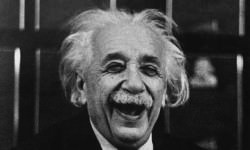
The first big problem is that wormholes aren’t traversable according to General Relativity. So keep this in mind; the physics that predicts these things, prohibits them from being used as a method of transportation. That’s a pretty serious strike against them.
Second, even if wormholes can be created, they’d be completely unstable, collapsing instantly after their formation. If you tried to walk into one end, you might as well be walking into a black hole.
Third, even if they are traversable, and can be kept stable, the moment any material tried to pass through – even photons of light – that would make them collapse.
There’s a glimmer of hope, though, because physicists still haven’t figured out how to unify gravity and quantum mechanics.
This means that the Universe itself might know things about wormholes that we don’t understand yet. It’s possible that they were created naturally as part of the Big Bang, when the spacetime of the entire Universe was tangled up in a singularity.
Astronomers have actually proposed searching for wormholes in space by looking for how their gravity distorts the light from stars behind them. None have turned up yet.
One possibility is that wormholes appear naturally like the virtual particles that we know exist. Except these would be incomprehensibly small, on the Planck scale. You’re going to need a smaller spacecraft.

One of the most fascinating implications of wormholes is that they could allow you to actually travel in time.
Here’s how it works. First, create a wormhole in the lab. Then take one end of the wormhole, put it on a spacecraft and fly away at a significant percentage of the speed of light, so that time dilation takes effect.
For the people on the spacecraft, just a few years will have occurred, while it could have been hundreds or even thousands for the folks back on Earth. Assuming you could keep the wormhole stable, open and traversable, then traveling through it would be interesting.
If you passed in one direction, you’d not only move the distance between the wormholes, but you’d also be transported to the time that the wormhole is experiencing. Go one direction and you move forward in time, go the other way: backwards in time.
Some physicists, like Leonard Susskind think this wouldn’t work because this would violate two of physics most fundamental principles: local energy conservation and the energy-time uncertainty principle.
Unfortunately, it really seems like wormholes will need to remain in the realm of science fiction for the foreseeable future, and maybe forever. Even if it’s possible to create wormholes, then you’ve got the keep them stable and open, and then you’ve got to figure out how to allow matter into them without collapsing. Still, if we could figure it out, that’d make space travel very convenient indeed.
If you could set up two ends of a wormhole to anywhere in the Universe, where would they be? Tell us your ideas in the comments below.
What are White Holes?
Black holes are created when stars die catastrophically in a supernova. So what in the universe is a white hole?
It’s imagination day, and we’re going to talk about fantasy creatures. Like unicorns, but even rarer. Like leprechauns, but even more fantastical!
Today, we’re going to talk about white holes. Before we talk about white holes, let’s talk about black holes. And before we talk about Black Holes, what’s is this thing you have with holes exactly?
Black holes are places in the Universe where matter and energy are compacted so densely together that their escape velocity is greater than the speed of light. We’ve done at least a million videos on them, but if you still want more info, you can start here with our Black Hole playlist.
Fully describing a black hole requires a lot of fancy math, but these are real objects in our Universe. They were predicted by Einstein’s theory of relativity, and actually discovered over the last few decades.
Black holes are created when stars, much more massive than our Sun, die catastrophically in a supernova.
So then what’s a white hole?
White holes are created when astrophysicists mathematically explore the environment around black holes, but pretend there’s no mass within the event horizon. What happens when you have a black hole singularity with no mass?
White holes are completely theoretical mathematical concepts. In fact, if you do black hole mathematics for a living, I’m told, ignoring the mass of the singularity makes your life so much easier.
They’re not things that actually exist. It’s not like astronomers detected an unusual outburst of radiation and then developed hypothetical white hole models to explain them.
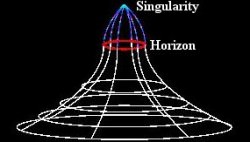
As my good friend and sometimes Guide to Space contributor, Dr. Brian Koberlein says, “If you start with five cupcakes and start giving them away, you eventually run out. At that point you can’t give away any more. In this case you can’t count down past zero. Sure, you can hand out slips of paper with “I O U ONE cupcake.” written on them, but it would be ridiculous to use the existence of negative numbers to claim that “negative cupcakes” exist and can be handed out to people.”
Now if white holes did exist, which they probably don’t, they would behave like reverse black holes – just like the math predicts. Instead of pulling material inward, a white hole would blast material out into space like some kind of white chocolate fountain. So generous, these white holes and their chocolate.
One of the other implications of white hole math, is that they only theoretically exist as long as there isn’t a single speck of matter within the event horizon. As soon as single atom of hydrogen drifted into the region, the whole thing would collapse. Even if white holes were created back at the beginning of the Universe, they would have collapsed long ago, since our Universe is already filled with stray matter.
That said, there are a few physicists out there who think white holes might be more than theoretical. Hal Haggard and Carlo Rovelli of Aix-Marseille University in France are working to explain what happens within black holes using a branch of theoretical physics called loop quantum gravity.
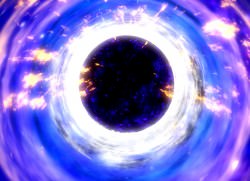
In theory, a black hole singularity would compress down until the smallest possible size predicted by physics. Then it would rebound as a white hole. But because of the severe time dilation effect around a black hole, this event would take billions of years for even the lowest mass ones to finally get around to popping.
If there were microscopic black holes created after the Big Bang, they might get around to decaying and exploding as white holes any day now. Except, according to Stephen Hawking, they would have already evaporated.
Another interesting idea put forth by physicists, is that a white hole might explain the Big Bang, since this is another situation where a tremendous amount of matter and energy spontaneously appeared.
In all likelihood, white holes are just fancy math. And since fancy math rarely survives contact with reality, white holes are probably just imaginary.
What other highly theoretical theories in space and physics would you like us to investigate? Tell us in the comments below.
How Can Black Holes Shine?
We hear that black holes absorb all the light that falls into them. And yet, we hear of black holes shining so brightly we can see them halfway across the Universe. What’s going on? Which is it?
I remember back to a classic episode of the Guide to Space, where I provided an extremely fascinating and concise explanation for what a quasar is. Don’t recall that episode? Well, it was super. Just super. Alright slackers, let’s recap.
Quasars are the brightest objects in the Universe, visible across billions of light years. Likely blanching life from everything in the path of the radiation beam from its lighthouse of death. They occur when a supermassive black hole is actively feeding on material, pouring out a mountain of radiation. Black holes, of course, are regions of space with such intense gravity where nothing, not even light itself, can escape.
But wait, not so fast “recap” Fraser Cain. I call shenanigans. If black holes absorb all the radiation that falls into them, how can they be bright?
You, Fraser Cain of days of yore, cannot have it both ways. It’s either a vortex of total destruction gobbling all the matter and light that fall into them OR alternately light can escape, which still sounds good. I mean, it could be WHERE NO STUFF CAN ESCAPE, except light.
If you’ll admit that you of the past was wrong, we’ll put you in the temporal cone of shame and move on with the episode. Right? Right? Wrong.
Let’s review. Black holes are freaky complicated beasts, with many layers. And I don’t mean that in some abstract Choprian “many connections on many different levels”. They’re a gobstopper from a Sam Neill Event Horizon style hellscape. Let’s take a look at the anatomy of a black hole, and everything should fall into place, including the terror.
At the very heart of the black hole is the singularity. This is the region of compressed matter that used to be a star, or in the case of a supermassive black hole, millions or billions of times the mass of a star. Astronomers have no idea what the singularity looks like or behaves, because our understanding of physics completely breaks down, along with the rest of our brains.
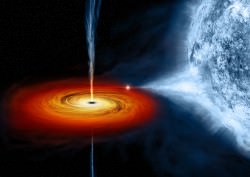
It’s possible that the singularity is a sphere of exotic matter, or maybe it’s constantly compressing down into an infinitely small size. It could also be a pork pie. We’ll never know, because nothing goes fast enough to escape from a black hole, not even light.
Maybe you’d need to be going 10 times the speed of light to escape. Or maybe a trillion times the speed of light. Which makes it easy; as far as we can tell, nothing can go faster than the speed of light, and so nothing is escaping.
As you get further from the singularity, the force of gravity decreases. Initially, it’ll still requires that you go faster than light. You’ll finally reach a very specific point where the escape velocity is exactly the speed of light. This is the event horizon, and it’s a different distance from the singularity with every black hole. That’s the line. Within the event horizon, the light is doomed, outside the event horizon, it can escape. This is the hard candy shell surrounding the chocolately unimaginable nightmare of physics.
So when see bright black holes, like a quasar, we’re not actually seeing light coming from inside the black hole itself or reflected of its surface. What we’re seeing is the material that’s piling up just outside the event horizon. For all its voracious hunger, a black hole’s gravitational eyes are much bigger than its stomach, and it can only feed so quickly. Excess stuff piles up around the black hole’s face and forms a vast disk of material, just like me at a Pizza Hut’s $5 all you can eat buffet. This pizza heats up until it’s like the core of a star, and starts blasting out radiation into space.
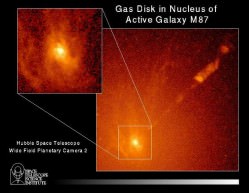
Everything I’ve said is for non-spinning black holes, by the way. Physicists will always make this point with great emphasis. Stay your angry comments astrophysicists, for I have said the magic stone-cutter appeasement code-word, “Non-rotating”.
Of course, black holes do rotate, and can rotate at nearly the speed of light. And this rotation changes the nature of the black hole’s event horizon in ways that make difficult math even harder. All this spinning generates powerful magnetic fields around the black hole, which focuses jets of material that blast out for hundreds of thousands of light-years. When we see these bright quasars, we’re staring right at these jets with our delicate little eyeballs.
So how can we see light coming from black holes when black holes absorb all light? It’s not coming from black holes. It’s coming from the super-heated region of junk all around the black hole. And still, anything that falls through the event horizon, whether it be light, junk, you, me or Grumpy Cat it will never been seen again.
What’s your favorite sci-fi black hole? Tell us in the comments below.
Thanks for watching! Never miss an episode by clicking subscribe. Our Patreon community is the reason these shows happen. We’d like to thank Marcel-jan Krijgsman and the rest of the members who support us in making great space and astronomy content. Members get advance access to episodes, extras, contests, and other shenanigans with Jay, myself and the rest of the team. Want to get in on the action? Click here.
How Quickly Do Black Holes Form?
A star can burn its hydrogen for millions or even billions of years. But when the party’s over, black holes form in an instant. How long does it all take to happen.
Uh-oh! You’re right next to a black hole that’s starting to form.
In the J.J. Abrams Star Trek Universe, this ended up being a huge inconvenience for Spock as he tried to evade a ticked off lumpy forehead Romulan who’d made plenty of questionable life choices, drunk on Romulan ale and living above a tattoo parlor.
So, if you were piloting Spock’s ship towards the singularity, do you have any hope of escaping before it gets to full power? Think quickly now. This not only has implications for science, but most importantly, for the entire Star Trek reboot! Or you know, we can just create a brand new timeline. Everybody’s doing it. Retcon, ftw.
Most black holes come to be after a huge star explodes into a supernova. Usually, the force of gravity in a huge star is balanced by its radiation – the engine inside that sends out energy into space. But when the star runs out of fuel to burn, gravity quickly takes over and the star collapses. But how quickly? Ready your warp engines and hope for the best.
Here’s the bad news – there’s not much hope for Spock or his ship. A star’s collapse happens in an instant, and the star’s volume gets smaller and smaller. Your escape velocity – the energy you need to escape the star – will quickly exceed the speed of light.
You could argue there’s a moment in time where you could escape. This isn’t quite the spot to argue about Vulcan physiology, but I assume their reaction time is close to humans. It would happen faster than you could react, and you’d be boned.
But look at the bright side – maybe you’d get to discover a whole new universe. Unless of course Black holes just kill you, and aren’t sweet magical portals for you and your space dragon which you can name Spock, in honor of your Vulcan friend who couldn’t outrun a black hole.
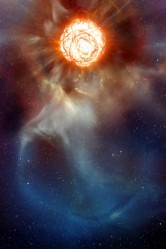
Here we’ve been talking about what happens if a black hole suddenly appears beside you. The good news is, supernovae can be predicted. Not very precisely, but astronomers can say which stars are nearing the end of their lives.
Here’s an example. In the constellation Orion, Betelgeuse the bright star on the right shoulder, is expected to go supernova sometime in the next few hundred thousand years.
That’s plenty of time to get out of the way.
So: black holes are dangerous for your health, but at least there’s lots of time to move out of the way if one looks threatening. Just don’t go exploring too close!
If you were to fall through a black hole, what do you think would happen? Naw, just kidding, we all know you’d die. Why don’t you tell us what your favorite black hole sci fi story is in the comments below!
And if you like what you see, come check out our Patreon page and find out how you can get these videos early while helping us bring you more great content!
The Physics Behind “Interstellar’s” Visual Effects Was So Good, it Led to a Scientific Discovery
While he was working on the film Interstellar, executive producer Kip Thorne was tasked with creating the black hole that would be central to the plot. As a theoretical physicist, he also wanted to create something that was truly realistic and as close to the real thing as movie-goers would ever see.
On the other hand, Christopher Nolan – the film’s director – wanted to create something that would be a visually-mesmerizing experience. As you can see from the image above, they certainly succeeded as far as the aesthetics were concerned. But even more impressive was how the creation of this fictitious black hole led to an actual scientific discovery.


